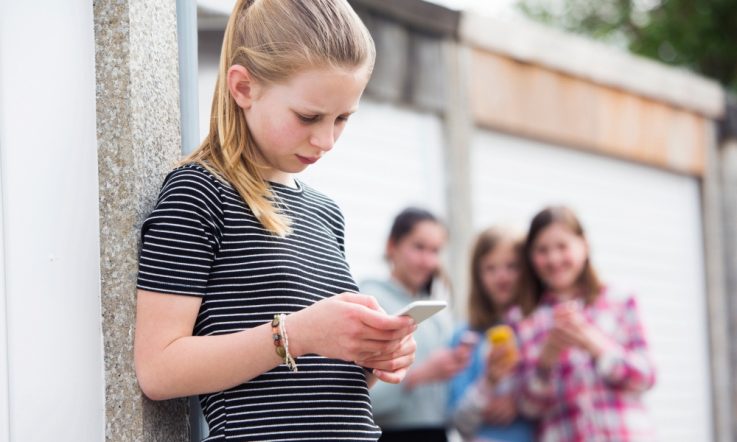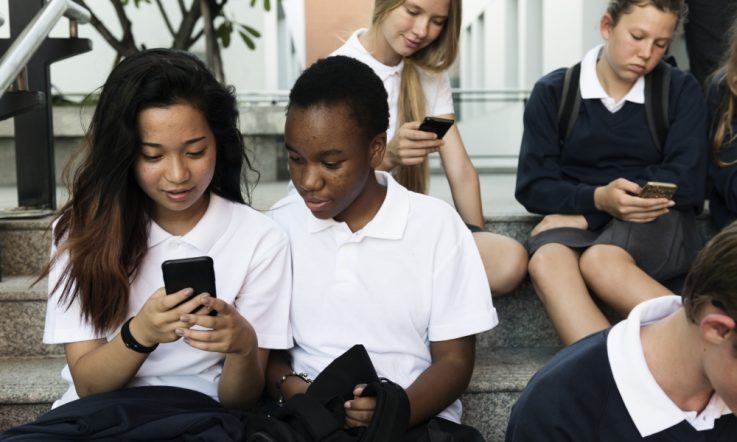News from the US that the Seattle public school system is suing some of the biggest tech companies for deepening the mental health crisis among children and young people is being watched closely around the world.
Whilst the US is relying on litigation to achieve greater youth mental health outcomes from excessive and harmful technology use, Australia has opted for regulation and education to tackle the same issues.
As we mark Safer Internet Day, it’s worth reflecting how these same issues may be affecting our children here. We at eSafety have, for the past 7 years, worked to achieve better prevention, protection and proactive change outcomes for Australians.
Today we have published an open letter from eSafety’s Online Safety Youth Council calling on Big Tech to take action against those who abuse or harass others online.
It highlights the concerns of a generation which has grown up with the internet and understands that while technology is being harnessed for extraordinary good, it is also being weaponised by some for considerable harm.
Seattle Public Schools is accusing the tech giants of targeting children with harmful content, forcing schools to hire mental health professionals, develop lesson plans about the effects of social media, and provide additional training to teachers.
The lawsuit alleges Snapchat, YouTube, Google, Facebook, and TikTok have created a public nuisance and contributed to behavioural disorders like anxiety, depression, disordered eating, and cyberbullying. Seattle Public Schools claims that from 2009 to 2019 there was an average 30% increase in the number of Seattle public school students who reported feeling sad or hopeless almost every day for 2 weeks or more in a row.
Why we should care in Australia
Closer to home, research by eSafety tells us that 45% of Australian children said they were treated in a hurtful or nasty way online in the past year; 33% said they felt left out or lost friends; and 20% per cent said they felt helpless or powerless (eSafety Commissioner, 2021).
These are just some of the raw facts and figures. We know that behind such numbers are real people suffering real pain, with sometimes tragic consequences – and all at a time when we are rushing headlong into a metaverse that will only exacerbate current challenges and potentially create new ones.
Consider for a moment the virtual reality headsets that immerse children in 360-degree worlds where they swim with sharks and mermaids. Or technology that transports them to the sights, sounds and sensations of ancient Rome. Or multi-player gaming where they can touch – or be touched – by their opponents.
This isn’t future tech, it’s today’s tech. For better or worse, these immersive technologies already allow us to interact with digital content in ways that look, sound, and feel similar to real life.
Are we ready for such hyper-realistic experiences? More importantly, are our children ready?
Immersive technologies such as augmented reality (AR), virtual reality (VR), mixed reality, and wearables or haptics can offer a full-body sensory experience that adds another dimension to the virtual experience. And the emergence of a spatial web, or metaverse – enabled by immersive technologies – will introduce a new paradigm to our digital lives.
This emerging tech has great potential, such as more opportunities for children in rural or remote areas to access education, or for neurodiverse young people to socialise in more accessible ways.
While it’s exciting to contemplate the promise of immersive technologies, it’s important to recognise existing and emerging harms. By providing hyper-realistic experiences, immersive technologies could increase the impact of negative interactions and lead to a rise in online assaults and other forms of abuse.
Research also suggests that the illusion of VR is far more powerful for young children, which is likely to heighten the impact of cyberbullying and other harms in immersive environments (Kenwright, 2018; Schmitz et al, 2020).
This impact extends to any young person still developing the critical reasoning skills to distinguish real life events from those taking place in virtual environments. For example, where VR games incorporate graphic themes, this is likely to evoke a much stronger emotional response in children, including potentially longer-lasting feelings of fear, anxiety and trauma.
In addition, children are uniquely at-risk in virtual multi-person environments, especially where they co-mingle with adults. Children may interact with fellow users represented only by avatars, exposing them to the risk of being groomed by online predators or manipulated into producing child sexual exploitation material.
In a metaverse, children might also chat or engage with an avatar who appears to be a young peer but in reality is not. The technology can make it more difficult for children and young people to discern a real friend from a malicious online actor.
What eSafety is doing in education
At eSafety, we strive to understand what children and young people need and want in online safety and how they expect the tech industry to help them navigate online environments safely. We capture this spirit in our Youth Aspirational Statement.
One of our primary functions is to educate Australians about online safety. Our online safety resources for educators, schools, universities, communities and parents include virtual classrooms and webinars, professional training programs, and an early years program for educators.
Our training and education resources are used widely across Australia and around the world. They are all free and evidence-based. You can find them at www.esafety.gov.au/education.
In addition to working with the education, NGO and mental health sector, we recently set up a more formal body, the National Online Safety Education Council. This is to make sure we understand the challenges schools and educators are facing so we can develop the guidance and resources they need, including classroom resources aligned with curriculum.
eSafety Youth Council demands change
Our Online Safety Youth Council has written an open letter to Big Tech to demand they impose consequences on users who abuse and harass others, breaching a platform’s own terms of service.
The letter says young people want urgent action to prevent popular online platforms from becoming a haven for trolls, haters and predators.
The Council members want to remind industry – and all young people – that behind every screen is a person.
As eloquently articulated by one of the members, 14-year-old Ruhani:
‘We can’t stand by and let rage and fearmongering continue unchecked. The harassment that so many of us have experienced has seriously damaged our confidence and wellbeing. We, as well as Big Tech, need to bring about serious change. This version of an online experience just isn’t cutting it anymore.
‘Just having platform rules isn’t enough. We want Big Tech to actively impose consequences on people who break the rules that these companies wrote and to prioritise the safety and wellbeing of their users over profit margins.’
We at eSafety ask these influential, global companies to heed the Council’s advice. While some companies are making positive strides in online safety, they are not at the pace and scale we urgently require.
The Council’s letter is published today, on the 20th anniversary of Safer Internet Day – a global day of action to raise awareness of online safety issues – and you can view it at esafety.gov.au/youth-council.
This Safer Internet Day, we’re encouraging every Australian to moderate their own online behaviour to help stem the negativity and abuse that permeate many parts of the internet.
We’re asking everyone to Connect. Reflect. Protect.
Connect safely by keeping apps and devices secure and regularly review your privacy settings. Reflect on how your actions may affect others or jeopardise your own safety. And protect yourself and loved ones by visiting eSafety.gov.au for advice and support, or to report serious online abuse.
References
eSafety Commissioner. (2021). Mind the Gap: Parental awareness about children’s exposure to online risks. https://www.esafety.gov.au/res....
Kenwright, B. (2018). Virtual reality: ethical challenges and dangers [opinion]. IEEE Technology and Society Magazine, 37(4), 20-25.
Schmitz, A., Joiner, R., & Golds, P. (2020). Is seeing believing? The effects of virtual reality on young children’s understanding of possibility and impossibility. Journal of Children and Media, 14(2), 158-172.
How do you plan to mark Safer Internet Day at your school? Could you use today as a good opportunity to discuss some of the dangers that exist online and where students can turn if they need support?
eSafety encourages everyone to connect, reflect and protect. How often do you review your privacy settings on your devices? Have you considered how your actions online may affect others or jeopardise your own safety? Are you actively trying to protect yourself and your loved ones online?



